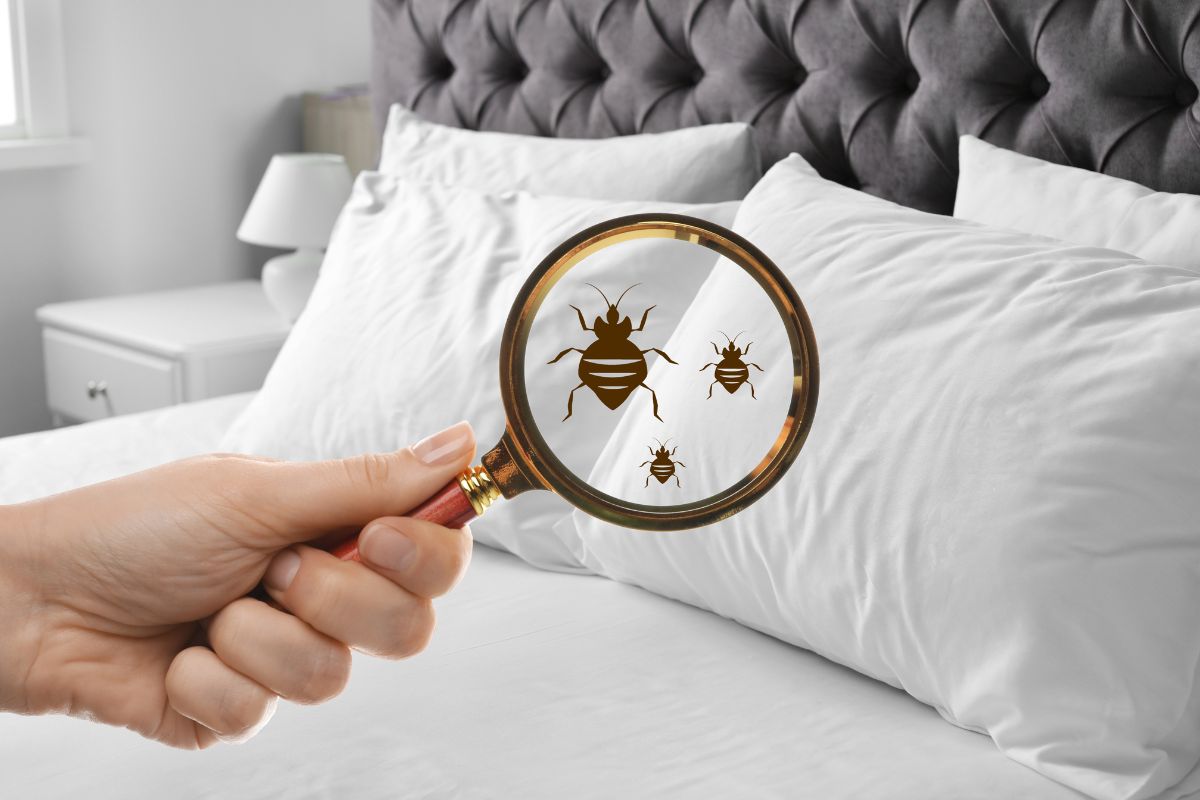Understanding Bed Bugs
Bed bugs are small, reddish-brown insects that feed on the blood of humans and animals. They are nocturnal, hiding during the day and coming out at night to feed. Bed bugs are wingless, have flat bodies, and are about the size of an apple seed. They are often mistaken for other pests, but their distinguishing features include their shape and color, as well as the bites they leave behind.
These pests go through several life stages, from eggs to nymphs to adults. They can live for several months, and females can lay hundreds of eggs in their lifetime. Bed bugs are adept at hiding in small crevices and can survive for months without feeding, making them particularly difficult to eradicate. Common myths about bed bugs include the idea that they only infest dirty homes or that they can fly. In reality, bed bugs can be found in any environment, and they spread by hitchhiking on luggage, clothing, and furniture.
Identifying Bed Bug Infestations
Identifying a bed bug infestation early is crucial for effective treatment. Physical signs of bed bugs include blood stains on sheets and pillowcases, dark or rusty spots of bed bug excrement on mattresses, bedding, and walls, and shed skins or eggshells. Another telltale sign is a musty odor caused by the bed bugs’ scent glands.
Bite marks are another indicator of bed bugs. These bites often appear as small, red, itchy bumps in a line or cluster, commonly found on areas of the body that are exposed during sleep, such as the face, neck, arms, and hands. However, not everyone reacts to bed bug bites in the same way, so the absence of bites does not necessarily mean you are free from an infestation.
Visual inspections are essential for identifying bed bugs. Start by examining your mattress and box spring, especially the seams and edges, for live bed bugs or signs of their presence. Bed bugs can also hide in cracks in the bed frame, behind headboards, and in other furniture near the bed. Don’t forget to check other common hiding spots such as curtains, electrical outlets, and baseboards.
Tools and Techniques for Detection
To detect bed bugs, you may need some tools like a flashlight and a magnifying glass to inspect small crevices and dark areas. Bed bug traps and monitors can also help identify an infestation by attracting and capturing these pests. Place these traps under bed legs and in areas where bed bugs are likely to travel.
If your inspection does not reveal clear signs of bed bugs but you still suspect an infestation, consider calling in pest control experts. Professionals have the experience and tools needed to conduct thorough inspections, including specialized detection equipment like bed bug sniffing dogs or heat treatments to identify hidden infestations.
.jpeg)
Treating Bed Bug Infestations
Once you’ve identified a bed bug infestation, it’s important to take immediate action. Start by isolating the affected area to prevent the bugs from spreading. Remove and bag all bedding, clothing, and any washable fabrics from the infested area. Wash these items in hot water and dry them on the highest heat setting to kill any bed bugs and their eggs.
For DIY treatment, vacuum your mattress, bed frame, and surrounding areas thoroughly. Use a steam cleaner on mattresses, upholstery, and other fabric items to kill bed bugs on contact. Be sure to empty the vacuum cleaner outside and dispose of the vacuum bag in a sealed plastic bag to prevent the bed bugs from escaping.
Chemical treatments are another option. There are various over-the-counter pesticides available that are effective against bed bugs. However, these should be used with caution, following the instructions carefully to avoid health risks. Insecticide sprays, dusts, and powders can be applied to cracks, crevices, and other hiding places.
Professional extermination is often the most effective way to treat a severe bed bug infestation. For homeowners in Massachusetts, bed bug infestations have become a significant problem in several cities. It’s no wonder why there is an increasing demand for pest control in Quincy, MA, Boston, MA, and other neighboring cities. Pest control services use a combination of treatments, including heat treatments that raise the temperature to levels lethal to bed bugs, as well as professional-grade insecticides that are more effective than over-the-counter options. The benefits of hiring professionals include their expertise in identifying all hiding spots and their ability to ensure that the infestation is completely eradicated.
Preventing Future Infestations
Preventing bed bug infestations requires vigilance and regular inspections. Routinely check your home for signs of bed bugs, especially after traveling or having guests. Use protective measures such as mattress encasements to prevent bed bugs from infesting your bed. Keep clutter to a minimum, as bed bugs thrive in hidden, undisturbed areas.
When traveling, inspect hotel rooms for signs of bed bugs and keep your luggage off the floor. Upon returning home, wash and dry all clothing and vacuum your luggage to eliminate any hitchhiking pests.
Dealing with the Aftermath
After treating a bed bug infestation, it’s important to thoroughly clean and disinfect the affected areas. This includes vacuuming and steam cleaning carpets, upholstery, and other fabric items. Dispose of any heavily infested items that cannot be effectively cleaned.
Living through a bed bug infestation can be stressful and anxiety-inducing. Address the psychological impact by staying informed and seeking support if needed. Remember that bed bugs are a common problem and can happen to anyone.
Continued vigilance is key to maintaining a bed bug-free home. Regular inspections and preventive measures will help ensure that your home remains a safe and comfortable environment.
Bed bug infestations are a serious concern, but with early detection and prompt treatment, you can effectively manage and eradicate these pests. By understanding the signs of an infestation and knowing how to treat it, you can protect your home and ensure a comfortable living environment. Whether you live in a spacious house or a cozy tiny home, staying vigilant and proactive is the key to keeping bed bugs at bay.






Share: